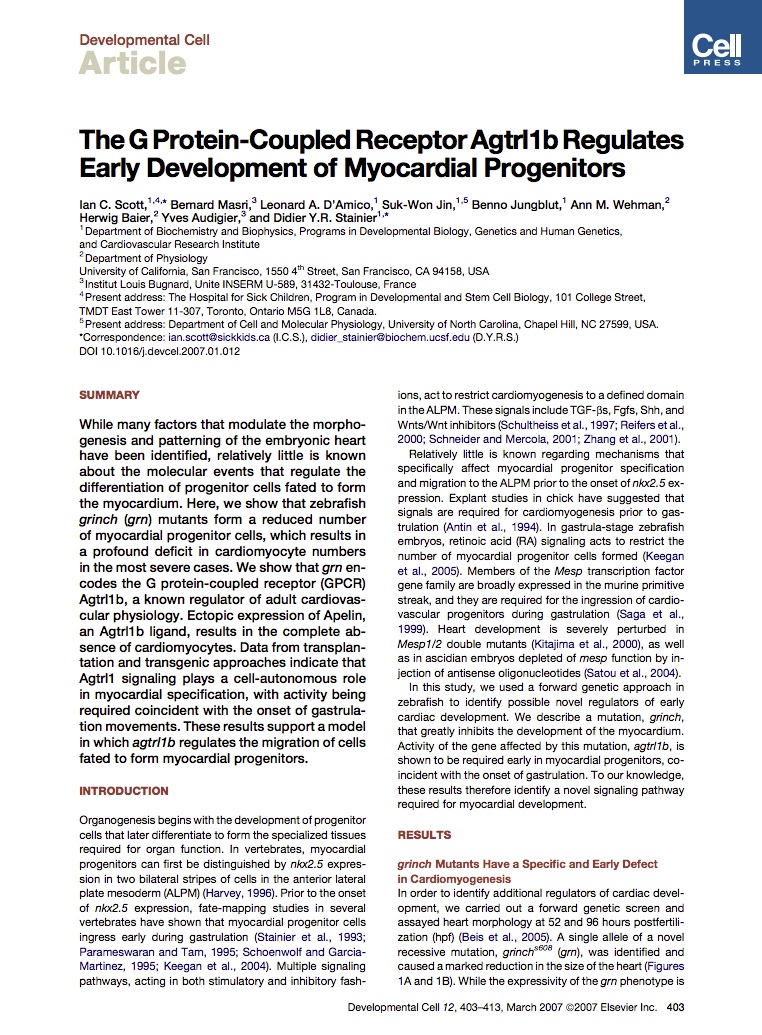SCIENCEGEEK ADVENT CALENDAR EXTRAVAGANZA! (DAY 4)

IN WHICH WE DETERMINE A GENETIC BASIS FOR THE GRINCH PHENOTYPE.
(Something about G-protein signalling and a heart, two sizes too small)
Scott I.C. et al. Dev Cell. 2007 Mar;12(3):403-13.

Figure 1. The grns608 Mutation Affects Cardiomyocyte Specification: (A and B) Lateral views of 48 hpf embryos from grns608 heterozygote incrosses. In severe cases, mutant embryos ([A], top; [B]) lack a distinguishable heart (arrow); however, this defect is variable within the same clutch.
TITLE: The G protein-coupled receptor agtrl1b regulates early development of myocardial progenitors.
ABSTRACT: While many factors that modulate the morphogenesis and patterning of the embryonic heart have been identified, relatively little is known about the molecular events that regulate the differentiation of progenitor cells fated to form the myocardium. Here, we show that zebrafish grinch (grn) mutants form a reduced number of myocardial progenitor cells, which results in a profound deficit in cardiomyocyte numbers in the most severe cases. We show that grn encodes the G protein-coupled receptor (GPCR) Agtrl1b, a known regulator of adult cardiovascular physiology. Ectopic expression of Apelin, an Agtrl1b ligand, results in the complete absence of cardiomyocytes. Data from transplantation and transgenic approaches indicate that Agtrl1 signaling plays a cell-autonomous role in myocardial specification, with activity being required coincident with the onset of gastrulation movements. These results support a model in which agtrl1b regulates the migration of cells fated to form myocardial progenitors.
